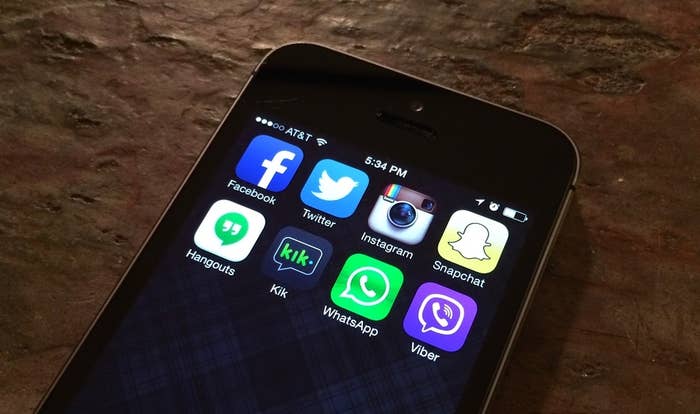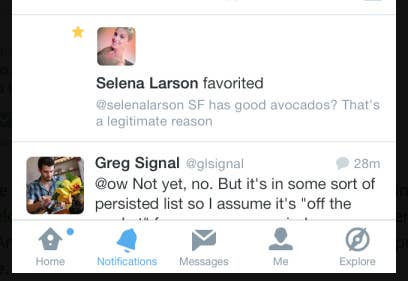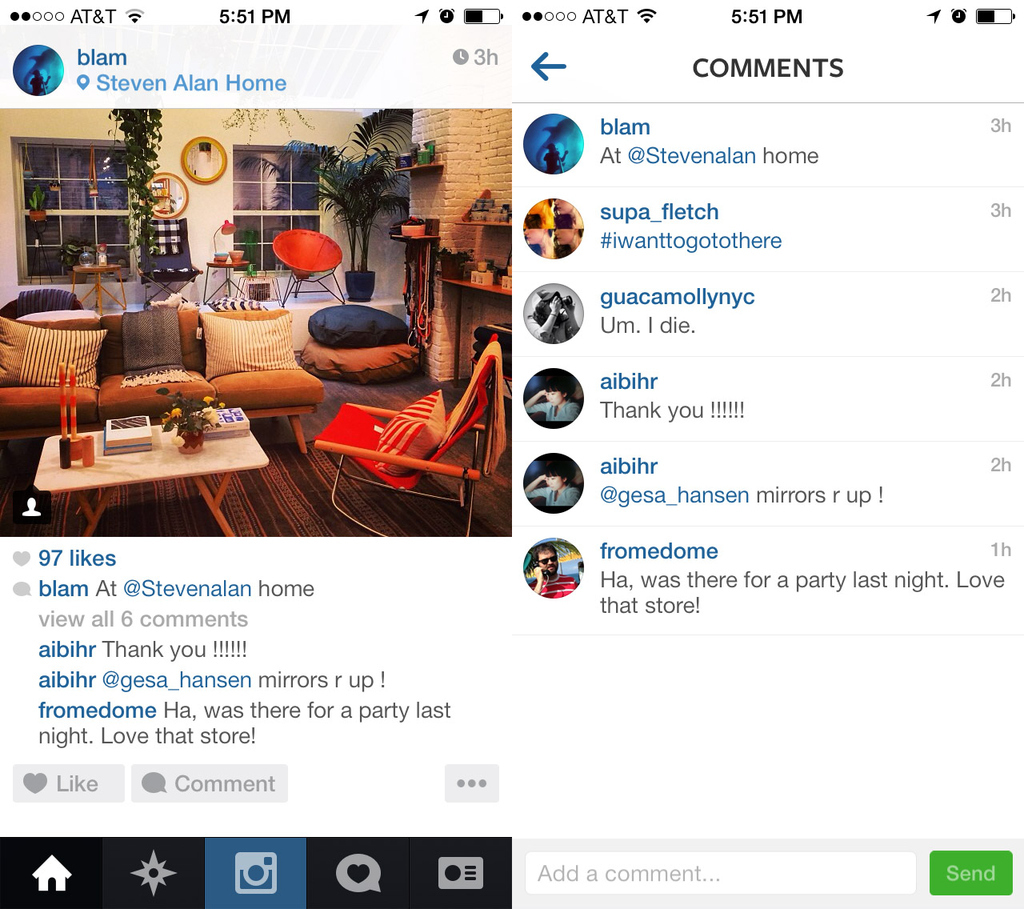
Instant messaging is the center of the internet. Everything else is a temporary distraction.
The case for this is strong: Every company that has ruled the internet in the last 20 years — even for a short period — has had a dominant instant messaging service. Aol Instant Messenger kept people's attention focused on the company that provided their internet. People came to Yahoo as a portal to the web; they stuck around for Messenger. Windows, at its peak, supported the largest messaging service in the world. Google's search dominance begat Gmail, which claimed a large swath of the messaging public with Google Talk. Facebook promised updates and pictures from our friends; eventually, our friends were there all the time, chatting, and we couldn't leave.
Great instant messaging services die slowly — all of the ones I mentioned above still exist in some form. But they rise quickly, and with great effect. And entering 2014, we're long overdue for the next one.
Which might explain why now, in a rare alignment, nearly every dominant internet service is either planning to create a new instant messaging service or significantly revamping what they already have. Facebook and Google are incumbents scrambling to hold on. Instagram is rumored to be working on an instant messaging service (rumors that I hear are true). There are also credible whispers that Twitter, which in a recent redesign experiment resurfaced its long-hidden Direct Message feature, is working on an enhanced private messaging service. A large-scale battle to own the best and biggest back channel — the likes of which we haven't seen since Yahoo, Aol, and Microsoft squared off — is under way. This time, it's happening on our phones.

Facebook and Google are in positions of power here, and they're doing everything they can to preserve that. Google recently unified its instant messaging system under the "Hangouts" moniker, creating a single channel for instant messages, texting, voice, and video chat. Facebook has gradually undertaken to do the same thing, placing private messages, online chats and mobile messaging in one stream. Both products, which started a subordinate features — Google Talk to Gmail, Facebook chat to the News Feed — can now function as independent services, and have standalone apps. Both companies have also made multi-billion dollar runs at Snapchat.
We're not sure what Twitter and Instagram's instant messaging services will look like, but we can guess. Both will arrive in a world where a majority of users are mobile; a world in which instant messaging and texting are in more or less the same activity (from a technological standpoint, for example, Apple's iMessage has about as much in common with the ancient AIM as it does with SMS). And they will exist, probably, within the confines of the apps and services they're a part of.
Twitter's current back channel, the Direct Message function, is useful but has been sidelined for years, hidden deeper and deeper within Twitter's interfaces to the point that using it feels almost furtive. DMing is a little clumsy — messages are received like kicks passed under a noisy dinner table. The exact implementation of a Twitter instant messaging service is somewhat difficult to visualize, but spiritually, it's an undeniably interesting fit. The site's influential base of power users are logged into the site all day already, talking to one another, so there may as well be an open back channel; another one of the site's most common use cases, the "I mostly follow my friends and family" type of user, already treats the site like an IM service. Widening the spectrum of privacy settings on these conversation feels like a natural move.

Instagram, on the other hand, currently has no back channel, but plays host to a crude, improvised version of one in its chaotic, overflowing comment sections. There is certainly some sort of energy to be harnessed there; whether instant messaging is the best way to harness it is unclear. It would be hard not to read a little bit of Mark Zuckerberg's yearning for Snapchat, a pure back channel service if there ever was one, into an Instagram instant message feature, especially given the timing of the rumors, which surfaced just a few days after news of Facebook's failed bid for the company. (It is worth pointing out here that there are third-party messaging apps that are based on Instagram, and that they are very popular.)
All of these bids for instant messaging attention are clearly competitive with one another. But for Google, Facebook, and Twitter, as large, public companies, they're also a way to gird against the stunning and underreported rise of messaging apps such as WhatsApp, Kik, Viber, and Line, which together have attracted hundreds of millions of users, and some of which, on their own, are larger than Instagram or Twitter. "I've seen data from companies that do device and behavioral analysis, and the figures are jaw-dropping," Forrester research analyst Charles Golvin told BuzzFeed's Charlie Warzel earlier this year. "In places like Brazil, Mexico, Spain... 25% of the time people spend on smartphones, they're spending in WhatsApp. The number is variable for each of those countries, but it is of that magnitude."
These services, like Snapchat, are stunningly effective at commanding attention: They are pure, app-to-app channels that have become popular alternatives to texting and old-school instant messaging on their own merits, not as the result of popular parent platforms. They attract a crucial audience of the young and super engaged. There is a small but reasonable fear that these apps could be to social networks what Craigslist was to newspapers — brutally efficient, virtually revenue-free destroyers of value.
If that is the case, then the current crop of social networks are doomed. But for now, they still have a chance. They already have your list of friends, and you already have their apps. Which you choose to adopt as your next back channel will depend on both of those things: which list of friends and peers is the best, or freshest, and which app knows how to get out of the way.
